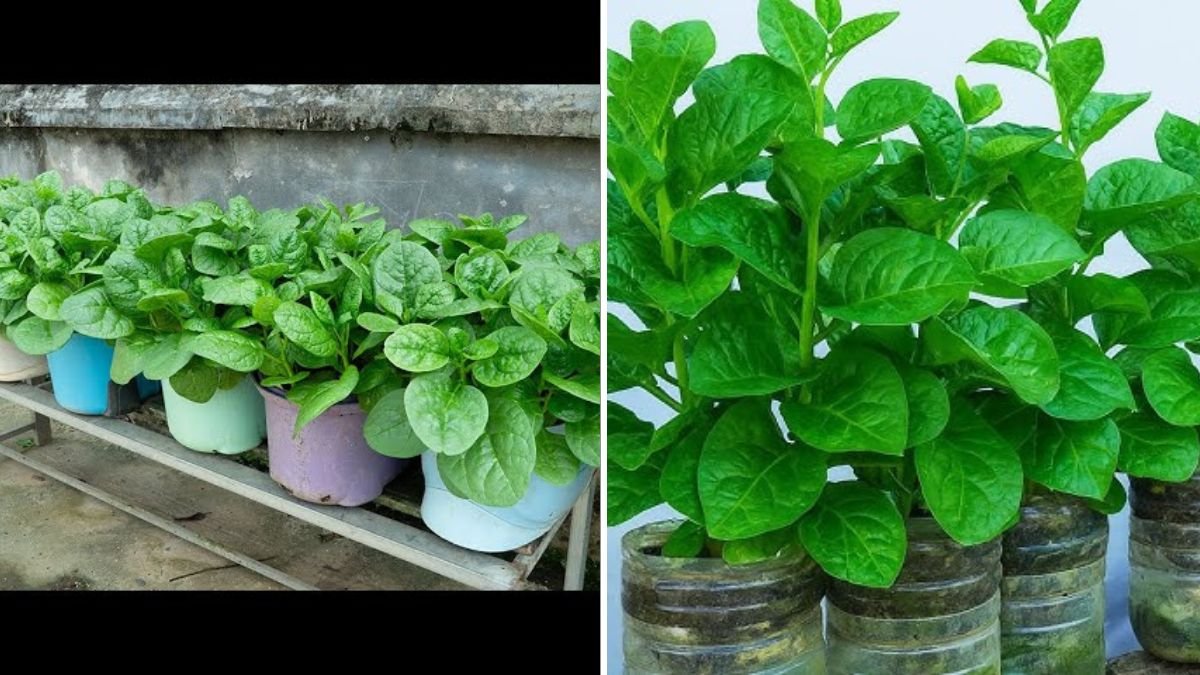If there’s one leafy green that deserves a permanent spot in every home garden, it’s spinach. This nutrient-packed vegetable grows quickly, thrives in cool weather, and rewards gardeners with continuous harvests of tender, flavorful leaves.
Whether you enjoy it in a morning smoothie, a hearty omelet, or a creamy pasta, growing your own spinach means you’ll never have to rely on grocery store greens again. In this comprehensive guide, you’ll learn how to grow spinach at home, from seed to harvest — plus insider tips to keep your plants lush, flavorful, and productive all season long.
Why Spinach Deserves a Spot in Every Garden
Spinach (Spinacia oleracea) is one of the most versatile and nutrient-dense leafy greens you can grow. It’s rich in iron, calcium, vitamin C, vitamin K, magnesium, and folate — all packed into just a few calories per serving.
Beyond its nutritional power, spinach offers plenty of reasons to grow it yourself:
- Quick harvest: Ready in as little as 30–45 days.
- Compact size: Grows beautifully in containers, raised beds, or even window boxes.
- Cool-weather crop: Perfect for spring and fall planting in most parts of the U.S.
- Multiple harvests: You can pick outer leaves while letting the plant continue to grow.
From the sunny gardens of California to the cooler backyards of Maine, spinach thrives almost anywhere in America with just a little care and the right timing.
Choosing the Right Spinach Variety
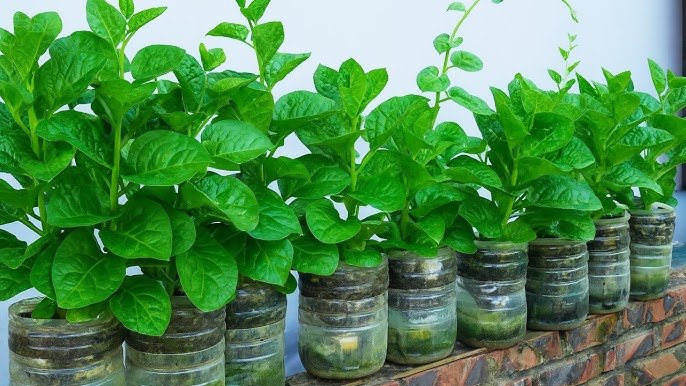
Spinach comes in three main types, each with unique traits suited for different growing conditions. Here’s how to choose the best one for your garden:
1. Savoy Spinach
This is the classic type — crinkly, dark-green leaves and a slightly chewy texture. It’s cold-tolerant and perfect for overwintering in mild climates.
Popular varieties: ‘Bloomsdale Long Standing,’ ‘Savoy King.’
Best for: Outdoor gardens in cooler regions.
2. Flat-Leaf (Smooth) Spinach
Smooth leaves are easier to wash and great for salads or cooking. It grows quickly and is often used for baby spinach.
Popular varieties: ‘Space,’ ‘Regal,’ ‘Giant Nobel.’
Best for: Container gardens and quick harvests.
3. Semi-Savoy Spinach
This hybrid type combines the best of both worlds — slightly crinkled leaves but easier cleaning and strong disease resistance.
Popular varieties: ‘Tyee,’ ‘Melody,’ ‘Indian Summer.’
Best for: Gardeners in warmer or humid climates.
When and Where to Plant Spinach
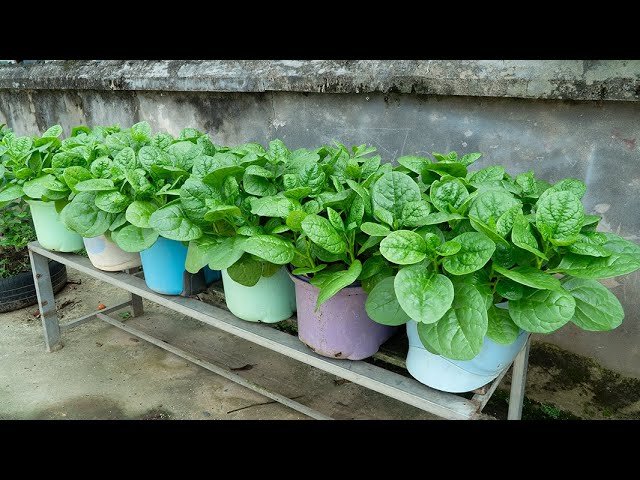
Spinach loves cool temperatures, typically between 40°F and 70°F. It grows best in early spring and fall, but with a little planning, you can enjoy fresh spinach nearly all year round.
Planting Season (By Region):
- Northern U.S. (zones 3–6): Plant outdoors 4–6 weeks before the last frost; again in late August for a fall crop.
- Southern U.S. (zones 7–10): Plant in late fall to early winter when temperatures are mild.
- Pacific Northwest & Northeast: Spring and late summer plantings thrive with steady moisture.
How to Prepare Soil for Spinach
Spinach thrives in rich, well-draining soil that stays evenly moist. It dislikes compacted or waterlogged soil.
- Ideal pH: 6.5 to 7.0
- Soil prep: Mix in 2–3 inches of compost or aged manure before planting.
- Fertilizer tip: Spinach is a heavy feeder. Use a nitrogen-rich organic fertilizer (like blood meal or fish emulsion) to promote lush leaf growth.
If you’re gardening in containers, use a high-quality potting mix with added compost and perlite for drainage.
How to Plant Spinach (Step-by-Step)

Spinach is easy to start from seed — no fancy equipment needed. Here’s how to do it right:
1. Sow the Seeds
- Depth: ½ inch deep
- Spacing: 3 inches apart in rows 12–18 inches wide
- Water: Keep soil consistently moist but not soggy.
For continuous harvests, sow seeds every 2–3 weeks. This staggered planting keeps your kitchen stocked with fresh greens all season long.
2. Thin Seedlings
Once seedlings are about 2 inches tall, thin them to 4–6 inches apart. Don’t throw away the extras — use them as tender baby greens in salads!
3. Mulch & Maintain Moisture
Mulch around your plants to keep soil cool and prevent weeds. Spinach roots are shallow, so avoid letting the soil dry out completely.
Watering and Fertilizing Spinach
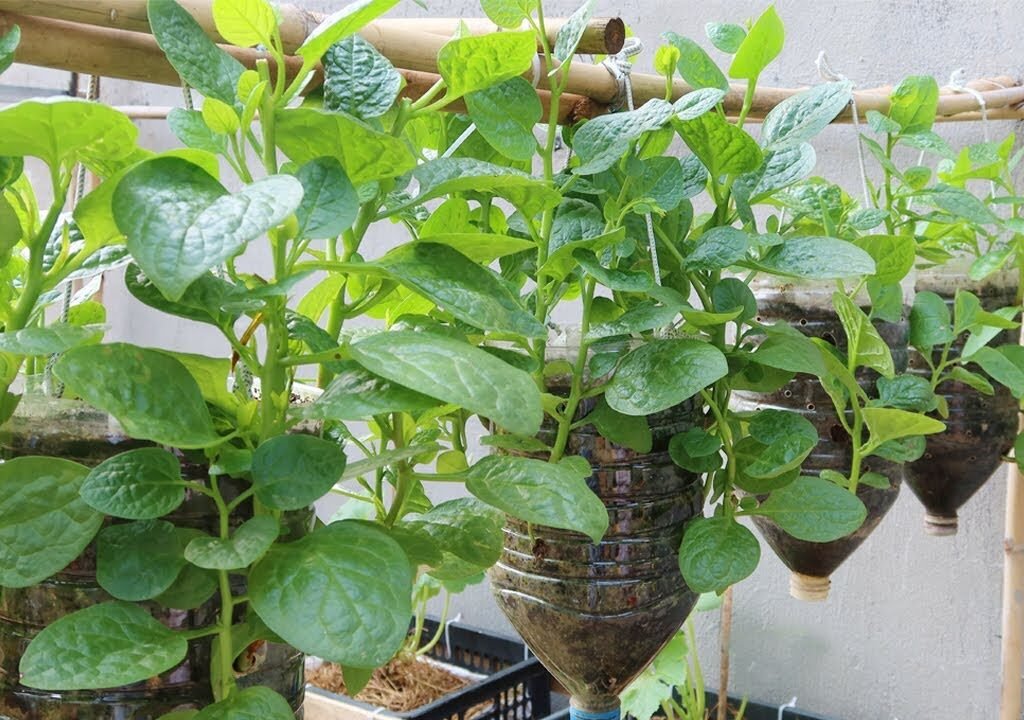
Spinach prefers moist, not wet soil. Water regularly, especially in dry or windy weather.
- Watering frequency: About 1 inch per week
- Feeding: Every 2–3 weeks with compost tea or a diluted liquid fertilizer.
Pro tip: Avoid overhead watering late in the day — wet leaves overnight can lead to fungal diseases.
Growing Spinach in Warm Weather
Spinach naturally bolts (goes to seed) in hot temperatures. To extend your season:
- Grow heat-tolerant varieties like ‘Tyee,’ ‘Bloomsdale Long Standing,’ or ‘New Zealand spinach.’
- Provide partial afternoon shade using a shade cloth.
- Water deeply and mulch heavily to keep roots cool.
In southern states, many gardeners grow spinach from October to March for best results.
Container Gardening: Grow Spinach Anywhere
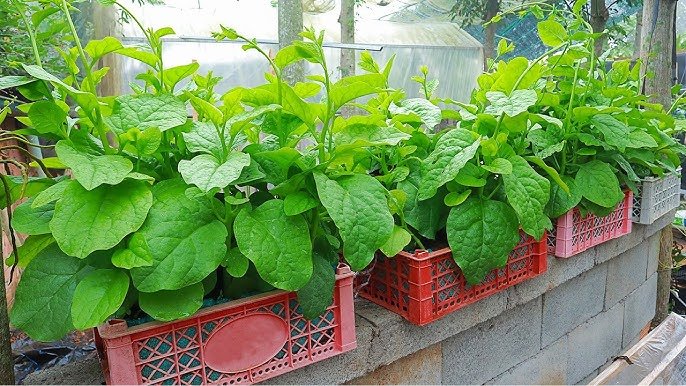
Don’t have a big backyard? No problem. Spinach grows beautifully in containers on patios, balconies, or windowsills.
Here’s how to do it:
- Container depth: At least 6–8 inches.
- Soil: Loose, fertile potting mix with compost.
- Water: Daily in warm weather (containers dry out faster).
- Light: 5–6 hours of sunlight per day or partial shade in summer.
For baby spinach, sow seeds densely and harvest young leaves every two weeks.
Common Spinach Pests and Problems
Even healthy spinach can fall prey to a few garden pests. Here’s what to watch out for — and how to handle them naturally:
| Problem | Symptoms | Solution |
|---|---|---|
| Aphids | Curled or sticky leaves | Spray with neem oil or insecticidal soap |
| Leaf miners | Tunnels in leaves | Remove affected leaves; cover with row covers |
| Slugs/snails | Holes in leaves | Use crushed eggshells or organic slug bait |
| Downy mildew | Yellow patches underneath leaves | Improve airflow, avoid overhead watering |
| Bolting | Flower stalks form early | Grow in cooler temps or partial shade |
Organic gardening methods keep your spinach safe for eating right off the plant.
Harvesting Spinach for Maximum Yiel
Spinach grows quickly, so harvesting properly ensures a continuous supply.
Baby Spinach:
Harvest young leaves when they’re 2–4 inches long. Snip the outer leaves, leaving the center to keep growing.
Mature Spinach:
Cut the entire plant about an inch above the soil line. New leaves often sprout back for a second harvest.
To keep your spinach fresh:
- Wash in cool water.
- Dry thoroughly.
- Store in a zip-lock bag or airtight container in the refrigerator for up to 5 days.
For long-term use, blanch and freeze spinach to enjoy homegrown greens year-round.
Health Benefits of Spinach
There’s a reason spinach has been a “superfood” for decades. Here are just a few ways it boosts your health:
- Supports healthy blood and bones — rich in iron, calcium, and vitamin K.
- Builds immunity — high in antioxidants like beta-carotene and vitamin C.
- Improves heart health — nitrates in spinach help regulate blood pressure.
- Boosts brain function — folate and magnesium support cognitive health.
- Aids digestion — full of fiber for gut wellness.
Eating fresh spinach daily — whether raw, sautéed, or blended into smoothies — fuels your body with nutrients that support energy, immunity, and longevity.
Delicious Ways to Use Fresh Spinach
When your garden is overflowing with spinach, the culinary possibilities are endless. Try these tasty ideas:
- Fresh salads with strawberries, walnuts, and feta.
- Creamy spinach pasta or lasagna.
- Spinach omelets or frittatas.
- Green smoothies with banana and almond milk.
- Spinach-stuffed chicken or pastry rolls.
Cooking tip: Spinach wilts quickly, so add it last to cooked dishes to preserve its vibrant color and nutrients.
Pro Tips for Spinach Success
- Sow often: Plant new seeds every few weeks for continuous harvests.
- Morning harvest: Leaves picked early are crisper and sweeter.
- Shade in summer: Protect from harsh sun to prevent bolting.
- Fertilize lightly: Too much nitrogen causes thin, floppy leaves.
- Save seeds: Let a few plants bolt and dry for next season’s planting.
Final Thoughts: Your Path to Endless Greens
Few vegetables are as rewarding — or as nutritious — as spinach. With its fast growth, compact size, and year-round versatility, it’s a perfect choice for beginner and experienced gardeners alike.
By following the simple steps in this guide, you’ll enjoy fresh, homegrown spinach whenever you want — straight from your backyard or balcony. Once you taste your own crisp, flavorful greens, you’ll never go back to store-bought again.
